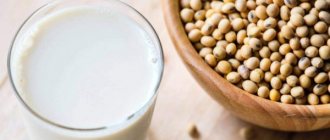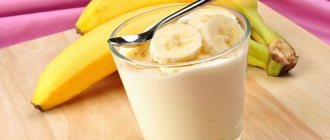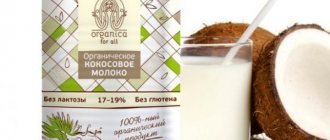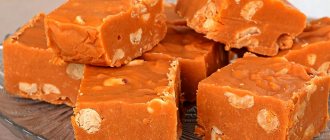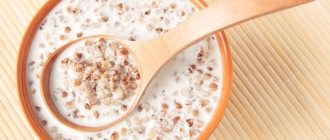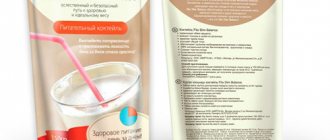Content
- Milk and acidity
- Milk and low acidity
- Is it possible to drink milk during exacerbation of gastritis?
- Chronic gastritis and milk
- Benefits of goat milk for gastritis
Milk is a healthy and nutritious product that saturates the body with essential microelements. The drink has a gentle effect on the digestive system, improving its functioning and protecting it from the negative effects of harmful microorganisms. Let's figure out whether milk in different forms is useful for gastritis or whether it should be abandoned.
What kind of milk do you need?
How to do it right
Milk and dairy products are very healthy, but excess calories, fat, salt or sugar make all the difference. How to choose the right dairy products?
- Gradually switching from whole milk to skim milk will help reduce your intake of saturated fat and calories. Try low-fat milk
(2 percent), then low-fat (1 percent), and finally skim. - If you drink a cappuccino or latte
, order it with skim milk. - Add skim milk instead of water to rolled oats
and hot oatmeal. - Use skim milk instead of cream
when making thick creamy soups. Also add reduced-fat milk to batters or desserts when cooking, instead of whole or full-fat baked milk. - For a snack or dessert, choose low-fat yogurt
and pieces of fruit. - Make a sweet seasoning for vegetables
or fruits from yogurt. - low-fat cheese
to casseroles, soups, stews, or vegetables . - Boiled potatoes can be seasoned with low-fat yogurt instead of thick sour cream
.
With low acidity of gastric juice
A disease with low acid levels can be identified by heaviness in the stomach, rotten belching, and bloating. Is milk good for gastritis? In this case, many patients are interested. Doctors advise against drinking the drink in its entirety. It is allowed to add it to tea or use it in cooking certain dishes. You can cook porridge with milk during exacerbation of gastritis or milk soups.
As for dairy products, for example, fermented baked milk and kefir, they are useful in reducing acidity. You can prepare cottage cheese and milk soufflés or casseroles, as well as milkshakes with non-acidic fruits and berries.
Milk on an empty stomach for pancreatitis
When pancreatitis worsens, there is a need for a strict low-calorie diet and fasting. It lasts up to 7 days. Meals are prescribed 6 times a day, in small portions. The consumption of fats and carbohydrates is limited, but with a sufficient amount of proteins. When the exacerbation subsides, it is necessary to create a full menu. It contains milk. But, you can drink it if there is no bloating or stool upset. There is one more rule: the product must be of high quality and in small quantities. Consumption without control will provoke a re-exacerbation. Whole drink is difficult to digest. It is better to prepare milk soup, porridge, casserole, and also an omelet. You can add the product to tea.
For acute gastritis
During exacerbation of gastritis, milk must be drunk very carefully. In the first few days you should avoid it, and on the fourth day you can add cow or goat milk to your diet. If the intestines are damaged along with the stomach, milk must be discarded.
For acute gastritis, it is recommended to use milk and honey to treat the disease until the condition improves. It is better to choose a homemade product by buying it at the market or in the village. Milk also treats erosive gastritis if it is of high quality. Store-bought packaged milk is often made from powders, so it does not bring any benefit.
The benefits of milk in the morning
It is good to drink milk at any time of the day, and even more so in the morning. After all, how well a person starts his day will determine his productivity. A glass of milk drunk on an empty stomach:
- will add a powerful charge of energy to the body in the form of vitamins and amino acids;
- normalizes the functioning of the heart, liver, and nervous system;
- improves the condition of hair and nails;
- will strengthen the immune system, improve mood and reduce the risk of high blood pressure;
- will increase the body's resistance to radioactive and UV influences;
- improves the condition of the skin and muscle tissue at the cellular level;
- will reduce the risk of osteoporosis and other diseases of bones and joints;
- will promote weight loss.
In order for milk to bring maximum benefits, you should drink one glass (200-250 ml) per day. The milk should be neither too cold nor too hot.
Don't forget that by heating milk, you reduce its value by breaking down the protein!
What else do you need to know to benefit from drinking milk?
- Milk is important and necessary to drink not only for children or adults working in hazardous industries - but for everyone!
- Dairy products are only harmful to people with individual intolerance to milk protein and lactose.
- When buying whole milk, pay attention to the expiration date and storage conditions. If the shelf life is more than 10 days, then the product is not real. Do not consume milk after the expiration date or if it has not been stored properly.
- When buying milk at the market and from village grandmothers, be careful. Unvaccinated animals can produce milk contaminated with foot and mouth disease, brucellosis, tuberculosis, hepatitis and other dangerous infectious diseases.
- In the morning, if you don’t have time to have a proper breakfast, prefer a glass of milk to a cup of coffee.
- It is most beneficial to combine milk with honey, cereals and grains. Especially with whole grain bread and pure, unadded wheat (oatmeal, corn flakes).
- The fat content of milk does not matter for weight loss unless the person is obese. The fact is that only 20% of cholesterol enters the body from the outside, and the remaining 80% is produced by the liver. If a person is healthy, then there is nothing to fear from bad cholesterol.
- Milk has the ability to remove heavy metals from the body, so people who work in hazardous industries or live in polluted cities should definitely drink a glass of milk a day, preferably in the morning, when the body better perceives all trace elements and amino acids.
- It is not recommended to take medications with milk. It reacts with chemicals, reduces the therapeutic effect of drugs, and in some cases even leads to negative results.
- The highest concentration of protein in condensed milk is up to 35%, which makes this product surprisingly valuable, especially if it has no added sugar. Many people consider condensed milk to be harmful, but this is not so. Unlike regular milk, condensed milk is completely absorbed by the body. But you can’t eat condensed milk in large quantities either, it contains a lot of sugar and calories - as much as 328 kcal.
If you care about your own health, drinking milk for breakfast is a must.
Chronic form of the disease
Milk at night for gastritis is recommended for the chronic form, as the drink creates a beneficial effect on the mucous membrane. It binds and neutralizes various toxins that irritate the gastrointestinal tract. You can drink it whole or add it to various dishes and drinks. The product will relieve you of nausea and relieve pain in the gastrointestinal tract. Baked milk is not recommended for chronic gastritis. In the chronic form, you need to know how to eat properly with gastritis.
Goat milk and gastritis
Goat's milk for gastritis sometimes becomes the main treatment. You can drink it before breakfast and at night, a glass in small sips. Even atrophic gastritis, in which cells gradually die, can be treated with goat milk. The product neutralizes gastric juice, which negatively affects the mucous membrane.
The peculiarities of the drink include the absence of flatulence and bloating. It gently envelops the gastric walls and prevents their damage. Systematic use helps improve the patient's condition within two weeks.
Be sure to remember how to drink goat milk for gastritis: you cannot start drinking it in large quantities - you should gradually introduce your body to it (no more than 1 glass per day).
Baby's diet after one year
It is best if the baby has a clear meal schedule. This approach will help teach the baby to follow a daily routine. And regular breaks between feedings will prevent the baby from becoming very hungry or, conversely, from overeating. Deviations from the standard mode are possible for no more than 15-20 minutes.
For a one-year-old baby, four feedings a day will be optimal: breakfast, lunch, afternoon snack and dinner. An approximate meal schedule looks like this:
- Breakfast 9-00. If the baby is used to getting up early, then the time can be moved. But it is worth considering that all subsequent meals will also shift to an earlier hour.
- Lunch 12-30. It’s good when your daily routine includes a walk before lunch. Then the baby will be able to spend all his energy and have time to get hungry. During a walk, it is permissible to offer a small snack if necessary, but no later than 2 hours before lunch.
- Afternoon tea 16-30. This meal does not involve a significant nutritional load. This is the time after nap time and usually babies do not have time to get hungry yet.
- Dinner 19-00. The evening meal should not be delayed until late in the evening. The child should not go to bed on a full stomach. Dinner should be served at least 2 hours before bedtime.
At night, the baby can be breastfed or formula fed. Also, many babies require feeding with milk in the morning. In order not to interrupt your baby’s appetite before breakfast, it is worth taking a break of 1.5-2 hours after morning milk or formula.
Nutrition rules for children aged 1 year
During this period, the baby's chewing reflexes actively develop. Typically, a 1-year-old child has 6-8 teeth, that is, physiological development already allows him to consume food in the form of small pieces. It should be remembered that these pieces should be small in size and soft in consistency. To begin with, you can offer the baby coarsely pureed homemade puree and observe how the child copes with the task.
The amount of food consumed for children from 1 year to 1.5 years is 1100-1200 ml. per day. It should be distributed between meals approximately as follows:
- Breakfast 280-300ml.
- Lunch 380-420ml.
- Afternoon snack 165-180ml.
- Dinner 280-300ml.
It is also recommended to adhere to daily food consumption standards:
| Product | Number of grams per day |
| Cottage cheese | 40 |
| Kefir, biolact, yogurt or milk drink | 100 – 150 ml or 200-300 ml of mixture (2 servings) |
| Sour cream | 10 |
| Cheese | 5 |
| Meat | 100 |
| Fish | 40 |
| Eggs | 40 |
| Vegetables | 200-300 |
| Fruits | 150-200 |
| Porridges and cereals | 200 |
| Vegetable oils | 5 |
| Butter | 20 |
| Sugar | 20-30 |
| Salt | 3 |
| Eggs | 40 |
Special attention should be paid to preparing food for a child. Vegetables and fruits are thoroughly washed with warm water. Meat, fish and eggs are cooked until fully cooked. The temperature of the food served should not exceed 40° C. It is permissible to add a small amount of salt and sugar to food during cooking, but if the baby willingly eats without them, you should not impose adult taste preferences on him.
Baby's diet
- Dairy and fermented milk products. Pure milk is still prohibited for feeding children 12 months of age. Its role is played by breast milk or a baby milk drink
- Fermented milk drinks such as kefir, biolact, drinking yogurt are selected with a fat content of no more than 3.2%. They should be present in the child's diet daily. It is enough to offer products such as sour cream and cheese 2 times a week. Cottage cheese can also be included in the daily menu.
- Porridge and cereals. Children 1 year old can be fed buckwheat, corn, rice, millet and oatmeal porridge. Cereals should be on the children's table every day. But regular adult porridges made from whole grains are not suitable for children. They have too rough a structure and are difficult to digest. It is better to choose specialized porridges for children. Now you can find milk porridges with an adapted mixture on sale. This is a natural product with double benefits: this diet retains all the benefits of cereals and contains milk powder adapted for baby food. In addition, children's cereals are additionally enriched with vitamins and minerals. The Kabrita product line has a large selection of cereals. Their basis is goat milk in an adapted form. The composition is additionally enriched with essential components for baby food. Kabrita porridges have a large selection of flavors: rice, buckwheat, oatmeal, multigrain, with the addition of fruit.
- Vegetables and fruits. Before one year, the baby has already become familiar with fruit and vegetable purees (apple, pear, zucchini, broccoli and cauliflower, pumpkin, prunes, banana, potatoes, carrots). Now the diet can be expanded with beets, green peas and beans, apricots, and kiwi. It is worth remembering that any new foods should be introduced into the child’s diet gradually, monitoring the reaction. Vegetables with a lot of fiber, as well as legumes, must be subjected to prolonged heat treatment. It is acceptable to offer them to your baby no more than once a week. The rest of the vegetables and fruits are required in the baby’s daily menu in the form of smoothies, purees, compotes, and jelly. Children's stores have a huge selection of various vegetable and fruit purees. When choosing such products, it is worth remembering the naturalness of their composition. It should not contain preservatives, sugar, sweeteners, or starch. The ideal composition is only vegetables or fruits. Some purees add cream or cottage cheese, which is also allowed. Kabrita brand baby purees are made from organically pure products, do not contain unnecessary components and are distinguished by a wide selection of flavors. These purees are convenient to take with you on a visit or for a walk. The baby can handle a snack from a soft package on his own.
- Meat and fish. These products are a source of essential protein, which is a must in daily baby food. The baby should receive meat every day, fish 2-3 times a week. For feeding children after one year, turkey, rabbit, veal, chicken, as well as low-fat fish such as pollock, cod, and hake are allowed. You can make steamed cutlets, soufflés, and purees from meat and fish. And since these are difficult-to-digest foods, it is better to offer them no later than lunch.
- Butter and vegetable oils. They are used to season porridges, vegetable and meat dishes. Butter can be spread on bread if the child can already cope with chewing food. Vegetable oils such as sunflower, olive, corn, flaxseed are used unrefined and added to ready-made dishes to preserve their beneficial properties.
- Eggs. The baby is familiar with quail eggs even before he is a year old. Now his diet can be diversified with chicken. After one year, the child is allowed to eat not only the yolk, but also the white. 2-3 servings per week will be enough.
